A beef steer contains hundreds of pounds of usable meat, ranging from the tender and delicately flavored tenderloins to the tough but tasty shanks. Most cuts fall in between, offering varying degrees of tenderness and flavor. Cuts from the rib section of the steer are some of the most popular, because they combine a rich, beefy taste with a very tender texture. The prime rib roast and ribeye roast are both cut from this section.
The Rib Section
Between the tough muscles of the steer's shoulder and rump, there's a long group of tender meat running along the backbone. The rear half of that muscle group is the loin, and the front half -- where it meets the animal's ribcage -- is the rib section. These muscles see little use during the animal's life, serving primarily to support the spine. That's why they're among the tenderest and most desirable cuts. Most loin and rib cuts are well marbled, which keeps them tender and juicy when they're cooked. The rib cuts also have thick veins of fat separating their muscles and cushioning the flesh from the bones.
The Prime Rib
There's a common misconception that a "prime rib" roast can only be cut from beef graded as USDA prime, but that's incorrect. Instead, the term refers to the roast's position along the ribcage. The steer's first five ribs enclose tougher muscles from the shoulder, which work best as a pot roast. The prime rib is cut from the "prime," or superior, portion that includes the sixth through 12th ribs. They're usually trimmed of the fatty cap section, which leaves the ends of the rib bones cleaned and visible. Prime rib is sometimes called a "standing rib" roast, because the bones enable it to stand upright for roasting. Most cooks now prefer to roast prime rib with the bones down, to form a natural rack.
The Ribeye
If you turn a rib roast and look at the end, you'll see that it's composed of one large, cylindrical mass of muscle surrounded by several areas of fat and thinner muscles. The large central muscle is referred to as the "eye" of the roast. If you cut your prime rib roast away from the bones, leaving that eye and a protective layer of fat, you have what's termed a "ribeye" roast.
Comparing the Two
Both prime rib and ribeye roasts are normally cooked to medium-rare for restaurant service, though home cooks can cook to higher levels of doneness if they prefer. Both cuts are well enough marbled to remain juicy even when well done. Some cooks prefer prime rib with the bones on, feeling that the bones produce a juicier, more flavorful roast. Others prefer the ribeye, because it's more compact and cooks more quickly, and there are no bones to contend with when it's time to carve the roast. Prime rib must be cut away from the bones before serving. The bones are also tasty, and can be separated and served separately, or used for soup.
Related Articles

Does a Rib Eye Have a Filet in It?

Do Filet Mignon Steaks Come From Female ...
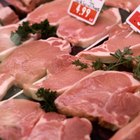
Types of Pork Chops
What Cuts of Beef Come From a Hind?
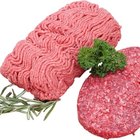
What Cuts of Meat Are Used for Ground ...

Is the Rib Eye or Sirloin a Better Cut?
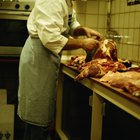
Cuts of Meat From a Front Quarter of ...

Different Cuts of Steak
Difference Between Ribeye Steak & ...

Choice Vs. Prime Beef Grades

What Cuts of Meat Can I Get From Deer ...
How to Cook a Seven Bone Pot Roast in ...

Meat Parts of a Lamb

What Is a First-Degree Relative?

What Is a Chateau Cut?
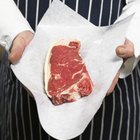
Tenderloin Filet Vs. Top Sirloin
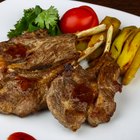
Rib Vs. Loin Grilled Lamb Chop
How to Cook Buffalo Fillet
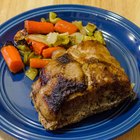
How to Cook Pork Roast in an Oven

Which Cuts of Meat Come From the Front ...
References
- On Cooking: A Textbook of Culinary Fundamentals; Sarah Labensky, et al.
- The Cook's Thesaurus: Beef Rib Cuts
Writer Bio
Fred Decker is a trained chef and prolific freelance writer. In previous careers, he sold insurance and mutual funds, and was a longtime retailer. He was educated at Memorial University of Newfoundland and the Northern Alberta Institute of Technology. His articles have appeared on numerous home and garden sites including GoneOutdoors, TheNest and eHow.